Explore Premium Hand Chisels
When you invest in hand chisels, you're equipping yourself with the essential tools for woodworking, sculpting, and other intricate tasks. Hand chisels are versatile instruments suitable for shaping, carving, and crafting intricate details in a range of materials, including wood, metal, and stone. In woodworking, having a high-quality chisel is paramount. It should be unfazed by bending or breaking, possess a blade sharp enough to effortlessly cut through any wood, and sport a robust handle. If you anticipate using chisels for extended periods, you'd be wise to consider procuring a top-tier chisel set. Chisel sets are a common sight in the hands of carpenters and joiners, but homeowners can also find them invaluable. A standard chisel set typically includes bevel-edged, precision-ground chisels, often accompanied by sharpening stones and blade protectors. Stanley's chisels, for example, feature beveled edges and come in four different sizes, boasting comfortable beech wood handles that ensure both user comfort and protection from the elements. Additionally, they come neatly organized in a leather roll case with five slots, and Stanley even throws in a lifetime limited warranty for good measure. These high-quality chisels feature blades forged from carbon-chrome steel, renowned for their durability and resistance to rust and corrosion. Each chisel measures 36 x 34 x 5.5cm. Take, for instance, the Stanley RSLCQCFSS5L FatMax Folding Chisel, sporting a sturdy and sharpenable 25mm blade. Its folding design makes it an excellent choice for travel. With such an array of chisels available, including carbon steel, charcoal, mortise, and paring chisels, choosing the right one can be a bit daunting. Let this guide be your trusted companion as you navigate the chisel landscape and make an informed decision.The Ultimate Chisel Set for Woodworking
Chisels are the cornerstone of woodworking craftsmanship. These timeless hand tools are typically among the first a woodworker receives, and their versatility makes them a mainstay on workbenches or tucked away in the aprons of carpenters and woodworkers. Cabinets, hutches, frameworks, moldings, and various wooden artifacts owe their fine joints, smooth surfaces, and intricate details to these small but potent blades. Whether you're considering your first chisel set or adding to your collection, choosing the right wood chisels involves careful research and weighing the pros and cons.Top Picks for Wood Chisels
Wood chisels come in various types, each designed for specific applications. Before making your purchase, it's wise to explore the options available and understand the unique strengths of each chisel blade and handle material. It's crucial to get acquainted with the various joining methods as well to ensure your woodworking projects meet your expectations.Wood Chisel Varieties
Let's introduce you to three of the most common chisels you'll encounter in a woodworking chisel kit, and outline the specific tasks each one is designed for:Paring Chisel
Paring chisels excel at fine wood removal. Their slim design sets them apart, ideal for tasks that don't require heavy-duty carving or chipping. When delicate detailing and finishing touches are on the agenda, these chisels are the go-to tools.Bench Chisel
Among the most widely-used wood chisels in workshops, bench chisels come in various blade and tip configurations. Beveled-edge bench chisels, in particular, shine when it comes to tackling tight angles and corners in joints, even though not all of them feature fully beveled edges.Mortise Chisel
Mortise chisels have a clear mission: to conquer mortise joints. With the ability to withstand the forceful blows of a wooden mallet, these chisels are more robust than their counterparts to meet the demands of such tasks.Demystifying Woodworking Chisels
A woodworking chisel, often referred to as a wood chisel, is essentially a piece of steel with a high bevel angle and a handle. Crafting fine furniture necessitates the use of high-quality wood chisels, and having a set of wood chisels at your disposal proves incredibly useful. These versatile tools come into play at various stages of the joinery process. Furthermore, it's imperative to avoid overpaying for subpar woodworking chisels. In this guide, you'll discover how to make an informed choice and invest in the best wood chisels your budget can accommodate.Unveiling the Leading Brands of Woodworking Chisels
If you're on the hunt for the top wood chisels, it's paramount to know which manufacturers stand out in the field. Below, you'll find a list of both antique and contemporary woodworking chisel makers who offer high-quality bench chisels, mortise chisels, and paring chisels in the Western style (apologies, Japanese chisels are not included). By clicking on the brand names below, which are linked to eBay and other search platforms, you can easily compare prices and models.Charcoal Chisels
Blade quality is a critical consideration when selecting a chisel. A low-quality blade won't yield clean, precise results; it may leave behind the impression of having run a misshapen tool across your workpiece. Superior chisels are crafted from high-quality steel, a material that confers strength, sharpness, and resistance to corrosion.Carbon Steel Chisels
Carbon steel chisels reign supreme in woodworking applications. They are renowned for their razor-sharp edges and exceptional hardness. Furthermore, their resistance to corrosion is impressive. High-carbon steel boasts a greater carbon content than low-carbon steel, contributing to its unyielding nature, albeit at the expense of flexibility, which translates to greater sharpening difficulty.Wood Chisel Handles: Style and Material Matters
Socket Chisels vs. Tang Chisels
To unleash the full potential of woodworking chisels, they need to be equipped with handles. Handles can be of two types: "socket" or "tang." Socket chisels feature a cone-shaped handle that inserts into a metal socket, while tang chisels sport a wooden handle that's connected to a pointed metal tang. What sets socket chisels apart is their durability, making them more expensive than their tang-handled counterparts. Tang chisels, on the other hand, sit inside the handle's mortise and may eventually damage the wooden handle if frequently subjected to mallet blows, while socket chisels rest on top of the handle's cone, able to withstand substantial pounding.Notable Features:
- Blade Varieties: Hand chisels come with a variety of blade types, from bench chisels suitable for general purposes to mortise chisels designed for joinery work, and carving chisels for intricate designs.
- Blade Material: Chisel blades are typically constructed from high-carbon steel or tool steel, known for their durability and ability to maintain a sharp edge. Some chisels feature laminated blades for added strength.
- Handle Material: Handles can be made from wood, plastic, or rubber. Wooden handles offer a classic feel, while rubber and plastic handles provide a comfortable grip and reduce hand fatigue.
- Bevel Angle: Chisels are available with varying bevel angles that influence their cutting performance. Lower angles excel at paring and slicing, while higher angles are better suited for heavy chopping.
- Sharpness: Maintaining sharp chisels is essential for achieving precise and clean cuts. Many chisels require initial sharpening, and regular maintenance is necessary to keep them sharp.
Benefits:
- Precision: Chisels offer precise material removal, making them perfect for shaping, carving, and creating intricate details in various materials.
- Versatility: Hand chisels are multifunctional tools, suitable for a wide range of tasks, from creating joints in woodworking to carving intricate designs in wood or stone.
- Control: When wielded with skill, chisels provide exceptional control, enabling craftsmen to achieve fine detailing and shaping with ease.
- Craftsmanship: Chisels are indispensable for artisans and woodworkers who take pride in their craftsmanship and meticulous attention to detail.
Safety Precautions:
- Protective Gear: Safeguard your eyes with safety goggles or a face shield to shield them from flying debris and splinters.
- Workpiece Security: Ensure your workpiece is firmly clamped or secured to prevent unintended movement during chiseling.
- Mallet Usage: When working with a chisel, use a wooden or rubber mallet to strike the chisel's handle; refrain from using a metal hammer, which can damage the blade or cause chipping.
- Blade Sharpness: Sharp blades are essential, as dull ones are more prone to slipping and causing accidents. Regularly sharpen and hone the blades as needed.
- Proper Technique: Master and employ correct chiseling techniques to maintain control and minimize accidents, always chiseling away from your body.
- Storage: Store your chisels in a tool rack or toolbox when they're not in use to safeguard the blades and reduce the risk of unintended contact.


